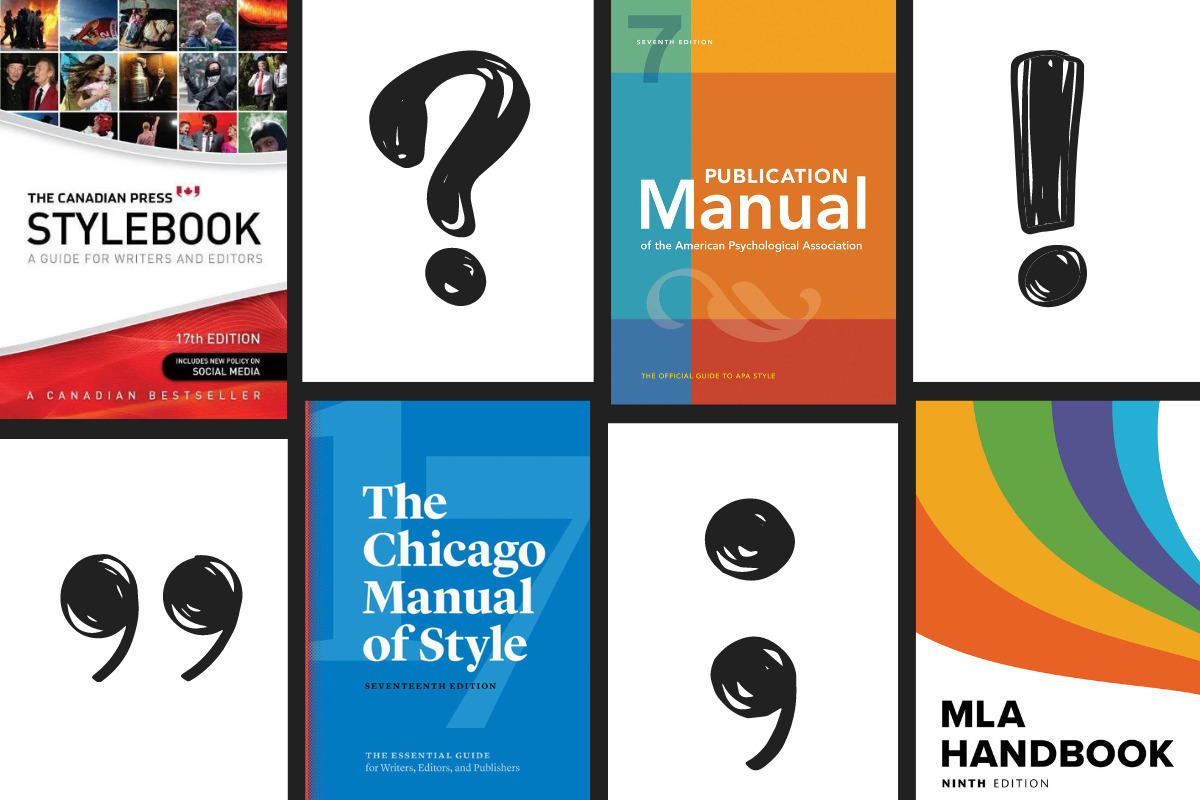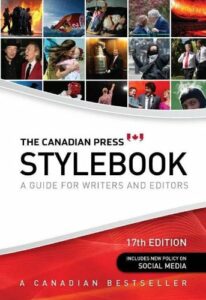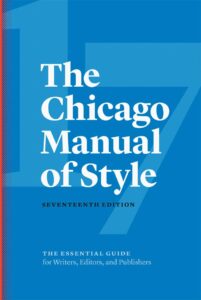Grammar Nerds are Stylish Too: The Top 3 Writing Style Guides

The most memorable rules are the ones spoken in absolutes: i before e, except after c; never end a sentence with a preposition; never start a sentence with and, but, however, or hopefully. But when you learn that those absolutes all have innumerable weird exceptions, your whole world shatters and you begin to question everything you were taught. (My whole life is a lie!)
I mean, fair enough. We’re told to always show our work because you can’t have a calculator in your pocket all the time, and … what’s this? My phone comes with a calculator? What did those teachers really know, then? If I’ll never need the pythagorean theorem again, do I really need to remember grammar rules or cite my sources?
But wait just a minute. While you may not always need to use full sentences or even proper spelling and punctuation in your text messages, there are certain scenarios where citing your sources is an absolute — no skimping, no shortcuts, no slackers, lest you become like this writer. Just like with the pythagorean theorem, context matters, especially if you’re addressing a room full of mathematicians. But this is where the absolute rules start to fall apart. We talk about grammar rules in grade school as though there’s a single set of agreed-upon mantras that the entirety of the English-speaking world religiously follows. But then we discover that the Brits use single quotes for dialogue, Canadians can’t decide between American or British loyalty or their -ises, -ices, or -izes, the Oxford comma is optional (or is it?)… The exceptions, it seems, are never ending.
So do grammar rules even matter when there’s so much diversity in who says what’s what?
MAKE IT MAKE SENSE
Just because we all need more flashbacks to middle school and high school to keep our survival instincts engaged, let’s go all the way back to when you learned how to cite your sources in essays and papers. MLA or APA? Which one did you use? Probably both, for grade school, and then college and a quick Google search for OWL Purdue reminded you that MLA was the artsy snob one and APA was the science nerd one. MLA and APA style each have different rules around formatting your bibliography/references/works cited page. (It’s okay, the history lesson is almost over. Pop some Tums, we’ll get through this.) But, unbeknownst to the average grade schooler, these guides are about so much more than that.
English style guides are just as numerous and plentiful as Christian denominations, and equally as fraught with controversy. Do you put your punctuation inside or outside the quotation marks? Do you add a period after abbreviated titles, or not? Do you capitalize job titles before or after a person’s name? Do you use the Oxford comma, and yet call it a serial comma, you absolute heathen?
Take a few deep breaths with me and think happy thoughts. Because I am, in fact, going to go over a couple of these style guides with you. But it’s going to be okay. No, English is not like math where there’s a right answer to (almost?) every equation. That’s why we need style guides: not to tell you the correct answer, but to guide you based on the context. Are you an artsy snob, or a science nerd? Artsy snobs like it one way, science nerds another, and that’s okay. It’s all about style. The role of the editor is to adapt to the author’s voice and then find the sweet spot of consistency within it, and that’s what style guides help us do too.
We won’t go into too much detail here — we don’t want anyone breaking out in hives or feeling exam prep anxiety here. There won’t be a pop quiz, or any other evaluation at the end; I promise.
THE TOP 3 STYLE GUIDES, ACCORDING TO THE BLOCK PARTY
The main problem that a style guide is trying to solve is the sheer variety of options available to how the English language is used, presented, and communicated. Punctuation placement, capitalization, numbers in running text — if you’re not careful, you might present the same type of thing three different ways on three different pages (or the same page). Not that this is wrong, exactly. It’s just not consistent, and inconsistent communication can cause unnecessary confusion for the reader. Style guides are all about finding consistency in a structure that has a lot of wiggle room, and some are more exhaustive than others. These are the ones we find ourselves reaching for most often.
1. The Canadian Press Stylebook

That said, don’t confuse this for a Canadian dictionary. While this style guide will adapt and adjust to include updates on whether you need “ou,” “ize,” or otherwise on some tricky words, it’s not only about spelling. It’s about style. If you’re stuck on what to capitalize and how to punctuate citations, abbreviations, and other tricky references, this is your new best friend. And journalists, broadcasters, and PR professionals will find industry-specific tips for reporting, interviews, audio and video handling, press releases, and more.
2. The Chicago Manual of Style

Especially relevant to fiction and memoir manuscripts, CMOS dives deep into the intricacies of grammar, usage, and documentation. This includes how to write numbers in a paragraph, comma placement and all of its particularities and exceptions, [brackets] vs. (parentheses), and so — so — much more. If you’re considering approaching a freelance editor to work on your manuscript, it may be worth asking them if they’re familiar with CMOS. Especially if your ultimate goal is traditional publishing!
3. Yours (Yes, You — the Client!)
Before you back away slowly with your hands raised in supplication, begging us not to subject you to the fraught and terrifying world of grammar debates, let me explain. Many businesses, especially larger organizations, will have an in-house style guide that likely builds off one of the popular established ones with its own variations and/or industry-specific additions. That’s why, when we build a relationship with you as a client, we want to know about your branding and style guide. Do you have one? If not, are you open to having one made? Knowing how your business or organization treats language in your industry helps us work smoothly with you to produce communications materials. Establishing clarity on your preferred style will help you communicate in a way that’s genuine, authentic, and effective.
THERE’S NO REAL WINNER HERE
In the end (and much to Kyla’s chagrin), this is not a soccer match with a clear winner. There’s no one style guide to rule them all (though publishing industry editors may disagree and laud the CMOS “editor’s bible” adage from the rooftops). There are different guides for different contexts and industries, and the good news is, if you’re not sure what style guide is right for you, your editor should be able to help you decide. Our job is to make sure you stick to whichever one you choose, so, as a writer, you won’t actually need to worry too much about following the pesky rules (though your editor will thank you if you do!).
In the end, the most important part is that you’re comfortable with the guide you use, and that it helps you communicate clearly and effectively to your audience. If that means making some tweaks to suit your industry, so be it. Engineers, psychologists, and medical professionals have been doing that for ages, so go right ahead! Stay consistent, and maybe you’ll even be the next grammar trend-setter in your sector.
—
Need a style consultant? We think those jeans look FABULOUS on you, but words are more our specialty, so please get in touch to discuss what style guide might work best for you, or for help with creating one of your own.

